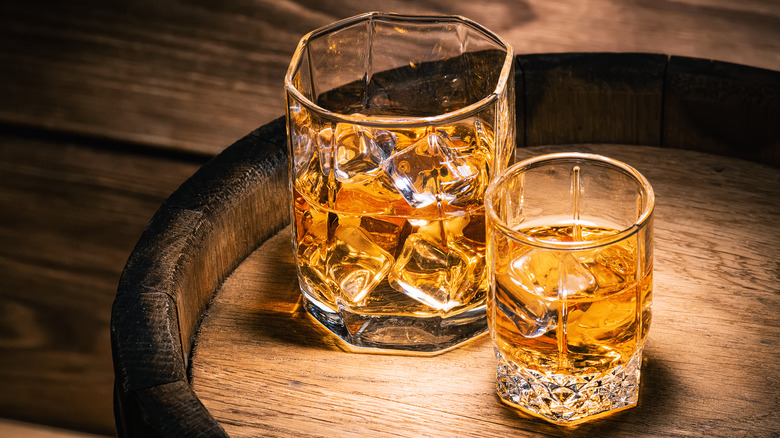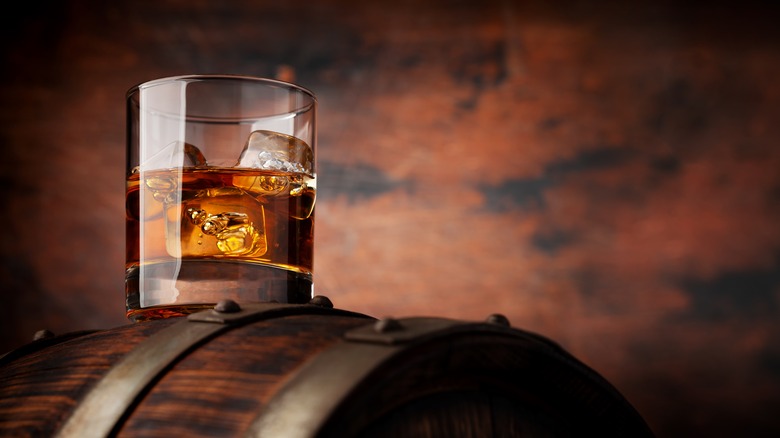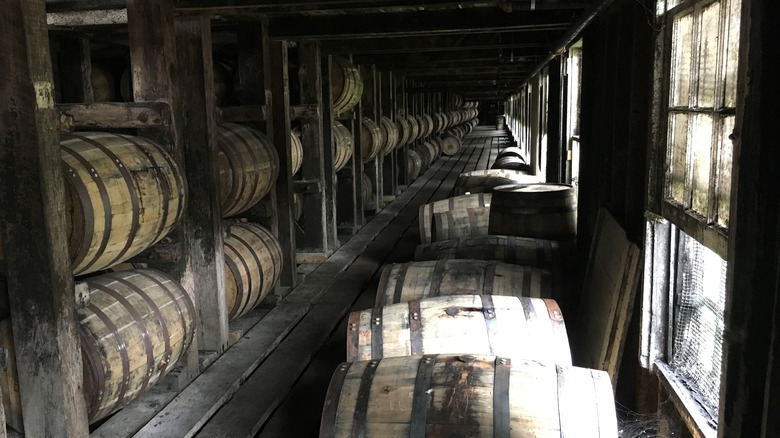Single Barrel Vs. Small Batch Bourbon: What's The Difference?
If you're new to bourbon, one of the first things you've likely learned is that it's made with corn. You may have even already picked up a set of fancy glasses in which to sip your newfound obsession. From the field of corn until the time it hits your glass, the entire process can be downright enchanting. Even wine lovers are throwing some skin in the game by using the bourbon soaked barrels for aging certain blends.
But, the vast styles of bourbon can get confusing. Walk into your favorite bottle shop, and you're likely to find bottles demarcated by everything from Kentucky to Tennessee and straight to blended. Single barrel on the surface seems self-explanatory, but, unlike a short stack of pancakes, a small batch bourbon has nothing to do with its size and can be quite the conundrum. Whether or not these descriptors are just crutch words calls for a little digging.
What does single barrel mean?
Whatever your bourbon of choice, most likely you'll find a variety called single barrel or single cask. Distillers like those at Knob Creek handpick a single vessel that has presented superbly throughout the aging process to be bottled unadulterated. With a dark amber hue, the nose on the 120 proof Knob Creek Reserve Single Barrel presents big aromas of vanilla and is slightly smoky which carries through on its oaky taste, and finishes strong. These types of notes can be explained by the aging process, where the barrel itself is key.
White oak trees can be found from the Ozarks to the Appalachians and are what coopers use to make bourbon barrels (per Kentucky Living). In fact, according to Vinepair, bourbon must be aged in new oak barrels that have been charred. Aaron Willett of Speyside Cooperage told Kentucky Living, "As seasons change, whiskey is pumped into and out of the barrel's walls." This is where the bourbon's flavor matures.
Most bourbon, including small batch, is made from a combination of several barrels to control consistency, according to Lux Row Distillers. While one barrel may turn out especially good, replicating that specific profile on a large scale isn't possible. When distillers like Lux Row and Knob Creek pull a thief from a superb barrel to taste and don't have the heart to bastardize it, that's when single barrel bourbon hits the bottle.
What does small batch mean?
Small batch bourbon differs from single barrel mostly because it comes from blending (also known as vatting) multiple barrels. Even still, The Bourbon Flight assures that small isn't a nod to its flavor. For example, the 90-proof Four Roses Small Batch tasting notes describe it as mellow with a slight spice, but overall well-balanced. Still, when considering how many barrels are used in a small batch recipe, you may be left scratching your head. It's vague at best.
The Bourbon Flight explains that there's great demand for small batches, which drives the price up because connoisseurs believe more attention is given to its process of blending a handful of barrels. Although, the number of barrels is rarely disclosed on the label, according to Gear Patrol, which also suggests that small batch simply means the method of blending, or vatting, and has no bearing on the quality of a specific small batch release.
Furthermore, Kentucky's first female master distiller and curator of Eaves Blind, Marianne Eaves, weighed in on the subject for InsideHook saying, "Small batch, like the words craft and handmade, for me has become diluted and virtually meaningless and should probably be avoided."
So, the long and the short of it is, small batch is more about method and less about quantity. If you like to indulge in the romance behind making quality bourbon, just remember that its story starts at the hands of its maker — not its description.


